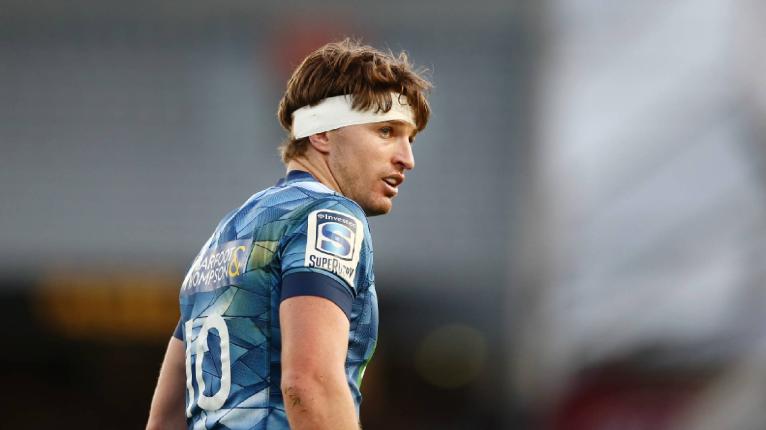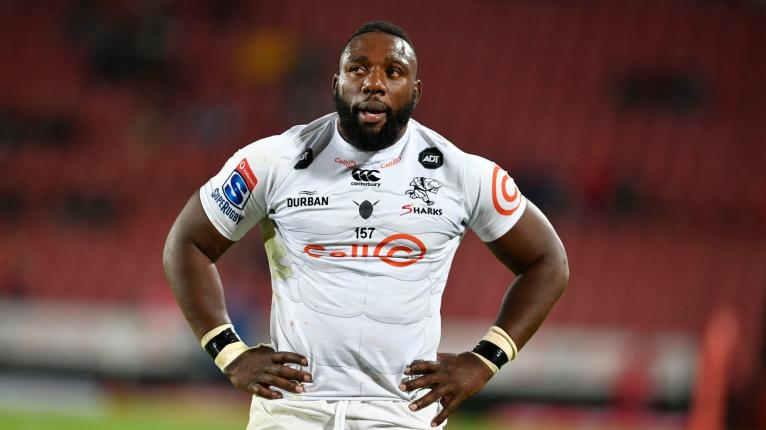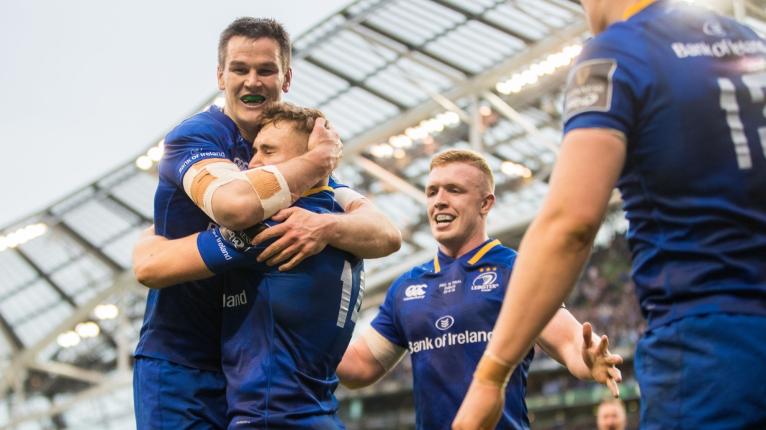Every country in the world where you can be paid to play rugby

The globalisation of rugby is one of the main priorities of World Rugby, and a mission that is bearing fruit. Money is a driving force in promulgating the game, as professional leagues can attract players that can improve the product of the competition.
Japan exhibited last year their growing strength and presence on the world stage, not only by their performance at their own Rugby World Cup, but by the immense following the tournament had.
It is no coincidence that the country’s domestic rugby scene has come on leaps and bounds in recents years as well.
But there are plenty more places where the game is growing, with professional and semi-professional competitions in all four corners of the world, some of which are far older than many would expect.
While the game of sevens offers certain avenues for players to make a living that 15s cannot, this is a list of all the leagues, and countries, that players of the 15-man format of the game can be paid to play the sport.
For the purpose of the article, we are using the Wikipedia definition of semi-professional sport: Semi-professional sports are sports in which athletes are not participating on a full-time basis. Semi-professionals are not amateur because they receive regular payment from their team (company), but at a much lower rate than a full-time professional athlete.
While some of the leagues listed below include fully professional and semi-professional teams, many of the semi-pro leagues listed will include largely amateur teams that offer players retainers, accommodation, use of vehicles, health insurance, expenses, and the possibility of work; as well as fully amateur outfits.
Europe
Gallagher Premiership
England’s premier competition, the Gallagher Premiership, is a 12-team league formed in 1987 and boasts five European champions. Wages start from £8k a year for academy players to £1m (NZ$2m) a year for Bristol Bears’ Charles Piutau, who is currently the highest paid player in the league.
RFU Championship
The RFU Championship is the tier below the Premiership, and was created at the same time. The league is still predominantly professional, and currently has eleven teams from England and one from Jersey. Wages start at £6k a year in some cases.
Below the Championship, both National League 1 and National League 2 (North and South) are semi-professional.
Top 14
One of the oldest rugby competitions in the world, France’s Top 14 was formed in 1892, and throughout its illustrious history Toulouse have lifted the Bouclier de Brennus a record 20 times. The highest paid player in the league is South Africa and Montpellier fly-half Handré Pollard on £1m (€1.1m/R23.5m) a year, but the average annual salary in 2017/18 was €235k (£212k).
Rugby Pro D2
France’s Rugby Pro D2 may not be steeped in as much history as the Top 14, having only been founded in 2000, but it is arguably the most competitive second division in all of rugby. The average annual salary for players in this league in 2017/18 was €65k (£58k).
Fédérale 1
The third tier of French rugby Fédérale 1 is an amalgam of 48 teams below Pro D2. This coming season, a Nationale branch of the league will be formed for the top teams in order to create a bridge to the professional leagues above, effectively creating a third professional league. Currently, in the Federale semi-professional league, there is a blend of amateur and paid players, with some players receiving between €15k-40k (£18k-36k) a year, or more for higher-profile players.
Fosroc Super 6
Scotland’s Fosroc Super 6 league is a new creation, creating a semi-professional league below the Glasgow Warriors and Edinburgh.
The 2019/20 season was abandoned after ten rounds due to COVID-19. The six sides are Ayrshire Bulls, Boroughmuir Bears, Heriot’s Rugby, Stirling County, Watsonians and Southern Knights.
The clubs operate on a budget of £125k.
Indigo Group Premiership
The Indigo Group Premiership serves as Wales’ semi-professional twelve-team league below the regions competing in the Pro14. The league was formed in 1990, and was originally the top tier of Welsh rugby until the region system was introduced in 2003.
So good to see. ?https://t.co/MM7Cd20nOu
— RugbyPass (@RugbyPass) August 10, 2020
Energia All-Ireland League
Like the Indigo Group Premiership in Wales, the Energia All-Ireland League is Ireland’s top league below the Pro14. Although technically amateur, professional players can play in Division 1, but they are paid by their province. Even then, only two professionals can play, and only one can be a forward. Meanwhile, no professionals are allowed in Division 2 and no foreign professionals are allowed in either league.
Some clubs continue to pay players in a non-official capacity however, with foreign players formally working in non-playing jobs at the club, while others receive modest per match or per month payments.
Top 12
The Top 12 is Italy’s semi-professional league below Zebre and Benetton, who both compete in the Pro14. The league is 91 years old, although it has had many different titles over the years, with Petrarca winning the most championships.
División de Honor
Spain’s División de Honor is a 67-year-old competition and has a blend of professional, semi-professional and amateur players. The number of fully paid players will vary from team to team, however. Some players can earn as much as $20,000 a season.
Bundesliga-Rugby
Germany’s Bundesliga-Rugby is a largely amateur league, although Heidelberger Ruderklub were professional until billionaire Hans-Peter Wild withdrew from the club in 2018. 2019 Champions, SC 1880 Frankfurt, have had an on-off relationship with professionalism over the years. The 16-team league was formed in 1971.
Didi 10
Georgia’s Didi 10 is a semi-professional league founded in 1990. Of the league’s ten teams, six are from the capital Tbilisi, with the reigning champions Locomotive winning the most titles.
CEC Bank SuperLiga
The CEC Bank SuperLiga is Romania’s professional league and has been the country’s top league since 1914. From next season, the league will be reduced to six teams (having previously been seven). Former Scotland head coach Matt Williams has worked there in recent years.
Rugby Premier League
Russia’s professional Rugby Premier League was formed in 1992 after the Soviet Championship disbanded. Enisei-STM have won seven of the past nine championships and also compete in the European Challenge Cup. Wages can vary widely, from the extremely modest to as much as €3,000 a month for the best players in the league.
Ereklasse
The Netherland’s Ereklasse is a semi-professional league that is almost a century old, dating back to 1935. The reigning champions are LRC DIOK, who won their first title since winning ten in a row between 1988 and 1998.
'Consistently the highest quality rugby I’ve ever seen' ?https://t.co/H5k9PYmuAa
— RugbyPass (@RugbyPass) August 10, 2020
The DHL Extraliga
Hungary’s DHL Extraliga is a six team semi-professional league featuring five teams from Hungary and one from Romania.
Ekstraliga
Poland’s Ekstraliga is a ten-team semi-professional league founded in 1957. As with other developing rugby countries in Europe, many players will often be offered a retainer, accommodation, expenses and the offer of work opportunities within or outside the club.
Ukraine Rugby Superliga
The Ukraine Rugby Superliga is another league where players can be paid, and previously provided opportunities in Moldova as well. Six teams currently compete in the league, with Olimp Kharkiv winning the title in 2019. Like many other competitions, the 2020 campaign was cancelled due to COVID-19.
Asia
Dialog Rugby League
Sri Lanka has its own semi-professional eight-team league, the Dialog Rugby League, which has been running since 1950. There is an even older cup competition, the Clifford Cup, which began in 1911.
Top League
Japan’s Top League is a competition that has seen extraordinary growth over the past decade. Although it is relatively new compared to some leagues, with its inaugural season only in 2003, it now attracts some of the biggest names in the game, albeit who are nearing the end of their career. Wages in this league vary from £140,000-£1m (NZ$270,000-NZ$2m+).

Top Challenge League
The Top Challenge League is the echelon below the Top League in Japan but still remains professional and offers lucrative deals to the number of former internationals that are littered across the league.
Africa
Currie Cup
A competition that predates the Top 14 by three years, the Currie Cup is South Africa’s leading domestic competition and has been won by Western Province a staggering 34 times. Although no longer playing in the competition, former Springbok Tendai Mtawarira was the highest earner in 2018, making R3 744 796 (£167k) a year.
The Currie Cup First Division is the semi-professional league below the Currie Cup Premier Division and also contains the Jaguares XV from Argentina, who played their first season in 2019 and actually won the competition.

SuperSport Rugby Challenge
The semi-professional tier below the top two Currie Cup divisions, the SuperSport Rugby Challenge not only plays host to many South African teams, but also Namibia’s Windhoek Draught Welwitschias and the Zimbabwe Academy.
Kenya Cup
The Kenya Cup is the top tier club rugby union championship in Kenya, founded in 1970 and organized by the Kenya Rugby Union.
The league is made up of twelve teams, some that are amateur, some such as Kabras Sugar that offer jobs to their players, and others that pay win bonuses as well as travel and training allowances. Players can earn up to Ksh20,000 (£140) a month.
Gold Top 20
Despite rugby being the national sport of Madagascar, and their Gold Top 20 competition receiving a great following, players are not paid. However, the champions are awarded four million Malagasy Ariary (£800). The reigning champions are the armed forces, who won their third consecutive title earlier this year.
North America
Major League Rugby
The United States’ Major League Rugby is one of rugby’s growing competition and has seen a number of former internationals ply their trade in the league since its inaugural season in 2018.
MLR is set to see more stars arrive in 2021 including former England captain Chris Robshaw, who will play for San Diego Legion, and the potential inclusion of Kanaloa Hawaii in the future will only improve the league’s appeal.
Though the bulk of the teams are from the United States, Canada is also represented in the league by the Toronto Arrows.
Depending on who you ask, salaries range anywhere from $10,000 to about $25,000, with big-name imports getting around $40,000 plus peaks like cheap or free accommodation. The current salary cap for the league is $500,000, so it doesn’t leave much wiggle room on salaries.

South America
Súper Liga Americana de Rugby
South America’s equivalent to MLR, Súper Liga Americana de Rugby, embarked on its first-ever season this year, but was suspended until 2021 after two rounds as a result of the COVID-19 outbreak.
Though there are plans for expansion in the coming years, the competition consists of six teams from six different countries: Los Ceibos (Argentina), Peñarol (Uruguay), Corinthians (Brazil), Olimpia (Paraguay), Selknam (Chile) and Cafeteros (Colombia).
The format in 2020 would have seen five teams regularly compete, with the bottom-placed side playing home and away fixtures against the understrength Cafeteros to determine 5th and 6th place in the standings.
Salaries range from US$500 (£380) to US$3.5k (£2.7k) a month.
Oceana
Mitre 10 Cup
Formed in 2006 to replace the National Provincial Championship, the Mitre 10 Cup is New Zealand’s leading domestic competition.
Players in the league can earn between NZ$18k-55k.
Mitre 10 Heartland Championship
Sitting below the Mitre 10 Premiership and Championship Divisions, the Heartland Championship is a semi-professional rung of New Zealand rugby which was also created in the domestic restructure in 2006.
National Rugby Championship
The premier league in Australia below Super Rugby, the National Rugby Championship is an eight-team professional league. It features seven teams from Australia as well as Fijian Drua, and has been won by six different teams since its formation in 2014.
Intercontinental
Guinness Pro14
A competition that spans five countries and two continents, the Guinness Pro14 is a league that has gone through much change since its formation in 2001.
The competition comprises two teams from South Africa, Italy and Scotland, four Welsh regions and four Irish provinces, with each country having different salary caps. Ireland has the highest cap, which means Leinster’s Johnny Sexton earns £536k (€612,419) a year, though average wages in 2017 were £170k.

Global Rapid Rugby
Global Rapid Rugby is a multi-continental tournament backed by billionaire Andrew Forrest with law tweaks to encourage a more expansive game.
GRR has six teams in total, two from China (China Lions and South China Tigers), one from Fiji (Fijian Latui), one from Samoa (Manuma Samoa), one from Malaysia (Malaysia Valke) and the Western Force from Australia, and is reaching out to rugby’s emerging markets.
The Western Force won the inaugural season in 2019, but the 2020 campaign was abandoned due to COVID-19.
With no salary cap, the competition’s prize money is A$1m.
Super Rugby
Covering New Zealand, Australia, South Africa, Argentina and formerly Japan, Super Rugby is one of the foremost competitions in the world. In its 25-year history, the tournament has been dominated by teams from New Zealand, with the five franchises winning 17 titles between them.
Like the Pro14, each country has a different salary cap, but the Waratahs and Australia captain Michael Hooper is the highest earner at £572k (AU$1.1m).












































































The Super rugby one is a bit off, Michael hooper gets 1.1m aussie dollars mainly from his aussie contract not his super rugby one with NSW, like NZ super contracts max is 195K I think or close to that.